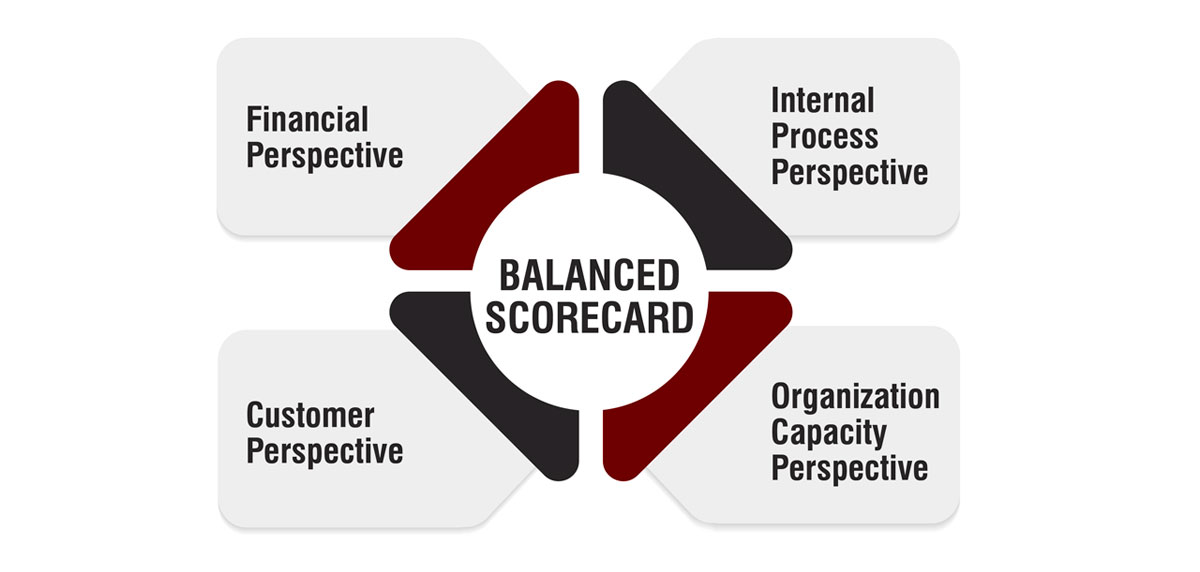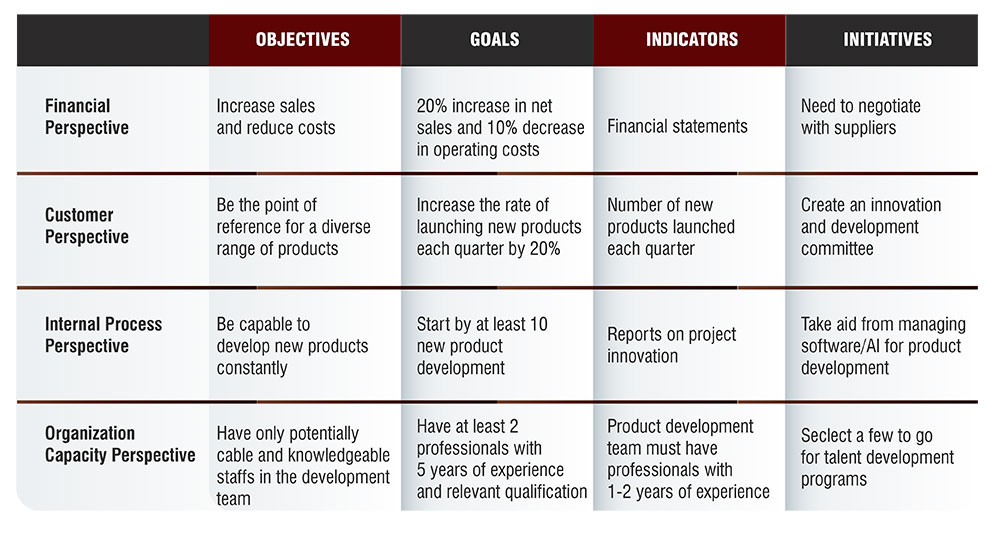A Comprehensive Guide to Implementing the Balanced Scorecard Framework
 March 22, 2024
March 22, 2024
The Balanced Scorecard stands out as one of the most effective strategy frameworks available. Implementing the Balanced Scorecard goes beyond mere comprehension of its framework; it's primarily about executing it effectively. The successful implementation of a balanced scorecard relies on a carefully devised business strategy, addressing both the 'HOW' and the 'WHAT.'
In this blog, we’ll walk you through the steps required to implement the balanced scorecard framework and explore its different perspectives and advantages.
What is a Balanced Scorecard?
The Balanced Scorecard, introduced by Robert Kaplan and David P. Norton in the 1990s via Harvard Business Review, has become a renowned strategy framework, adopted by numerous organizations. It functions as a business strategy management system, facilitating alignment between strategic initiatives and operational objectives to enhance business performance. A key focus is the creation of Key Performance Indicators (KPIs) across four vital areas, facilitating quicker and more informed decision-making.
The widespread adoption of the Balanced Scorecard is evident, with studies showing its use by most U.S. companies since 1997 and continuing into recent years. Despite this, many organizations naturally align with its principles, reflecting its intuitive appeal. These principles guide efforts towards the same four perspectives, resulting in a sharpened focus on both leading and lagging key performance indicators (KPIs) and a balanced approach to short-term and long-term objectives.
Four Perspectives of a Balanced Scorecard
The Balanced Scorecard relies on four perspectives:

-
Financial Perspective: This perspective focuses on assessing the financial health and performance of the enterprise. Key measures typically include revenue growth, operating income, return on equity, and other indicators relevant to stakeholders and owners.
-
Customer Perspective: This perspective compares the enterprise's service offerings with those of competitors from the viewpoint of the customer. Metrics often include customer satisfaction, responsiveness, and industry-specific measures such as customer growth and churn for cellular companies, on-time delivery for manufacturing firms, and repeat customer rates for consumer products companies.
-
Internal Process Perspective: This perspective evaluates the efficiency and effectiveness of internal business processes and supporting technologies. Metrics commonly tracked include order processing time, new hire onboarding time, setup time, cycle time, first pass yield, and adoption of paperless and self-service processes.
-
Organization Capacity Perspective: Formerly known as "Learning and Growth," this perspective acknowledges the importance of human capital and organizational capabilities in driving improvement. It assesses the enterprise's ability to evolve and support its goals, monitoring metrics like employee satisfaction/engagement, time to hire, turnover rates, and investments in employee training and education.
These metrics across all perspectives collectively contribute to a comprehensive evaluation of an organization's performance and its alignment with strategic objectives.
Benefits of Building a Balanced Scorecard
The Balanced Scorecard is a widely used tool in various sectors that measures internal performance by categorizing business strategy into financial, customer, internal process, and organizational capacity perspectives. Its success stems from simplicity and versatility, applicable to for-profits, non-profits, and government agencies. Despite the separate categories, their interlinkages mean success in one area signifies progress in the others. Regardless of industry, successful implementation of the Balanced Scorecard is possible when introduced appropriately.
Implementing a balanced scorecard offers a range of advantages:
-
Focus on Key Success Factors: By incorporating the four perspectives of the Balanced Scorecard, organizations prioritize essential drivers of success like customer satisfaction and operational efficiency.
-
Effective Communication of Strategy: The Balanced Scorecard serves as a management framework, facilitating clear communication of the organization’s strategy to stakeholders. This enables alignment and understanding of actions taken concerning strategic objectives.
-
Identification of Competitive Advantages and Improvement Areas: Through the Balanced Scorecard, organizations can pinpoint competitive advantages and areas needing improvement, enabling targeted efforts for growth and efficiency.
-
Enhanced Accountability: Tangible metrics assigned to each perspective foster accountability among employees and teams.
Steps to Implement a Balanced Scorecard with Example
Here’s how to business strategists implement a balanced scorecard:
-
1. Define Clear Objectives:
First, you need to clearly understand your organizational goals. These should align with your mission, vision, and overall business strategy. Let’s take the example of a manufacturing company that aims to improve operational efficiency, product quality, customer satisfaction, and financial performance. Here, objectives include reducing production waste, increasing customer retention rates, and improving profit margins.
-
2. Choose Relevant KPIs:
Next comes selecting Key Performance Indicators (KPIs) that align with your objectives and provide measurable insights. In the above instance, KPIs may include waste reduction percentage, customer satisfaction index, on-time delivery rate, and gross profit margin. For instance, a target could be to reduce production waste by 15% within the next year.
-
3. Develop Action Plans:
This involves creating strategic plans to achieve your KPIs. If improving financial metrics is a goal, consider adjusting fundraising strategies. Action plans may involve implementing lean manufacturing techniques to reduce waste, enhancing quality control processes to improve product quality, and investing in customer relationship management systems to track and improve customer satisfaction.
-
4. Align the Organization:
Organize your resources and structure to support the balanced scorecard. Allocate resources according to priority areas identified in the scorecard and align employee roles with specific KPIs. Foster a culture that reflects the goals outlined in the balanced scorecard.
-
5. Communicate Effectively:
Ensure all stakeholders understand the balanced scorecard and their role in achieving objectives. Clearly communicate KPIs and progress indicators to employees, enabling them to evaluate their contributions. This clarity promotes a shared understanding of organizational priorities.
-
6. Regular Review and Revision:
Periodically review the effectiveness of the balanced scorecard. Adjust objectives and KPIs based on achieved success or evolving organizational needs. Be open to revising the scorecard framework to better reflect performance and goals. For example, if the on-time delivery rate falls below target, the company may reevaluate its production scheduling processes and make necessary improvements.
Balanced Scorecard Example: Strategic map for an E-Commerce Business -

Conclusion
Implementing the Balanced Scorecard demands a strategic approach that prioritizes translating an organization’s vision into precise operational objectives. By balancing financial metrics with indicators related to internal processes, customer perspectives, and organizational growth, businesses can achieve comprehensive performance management.



